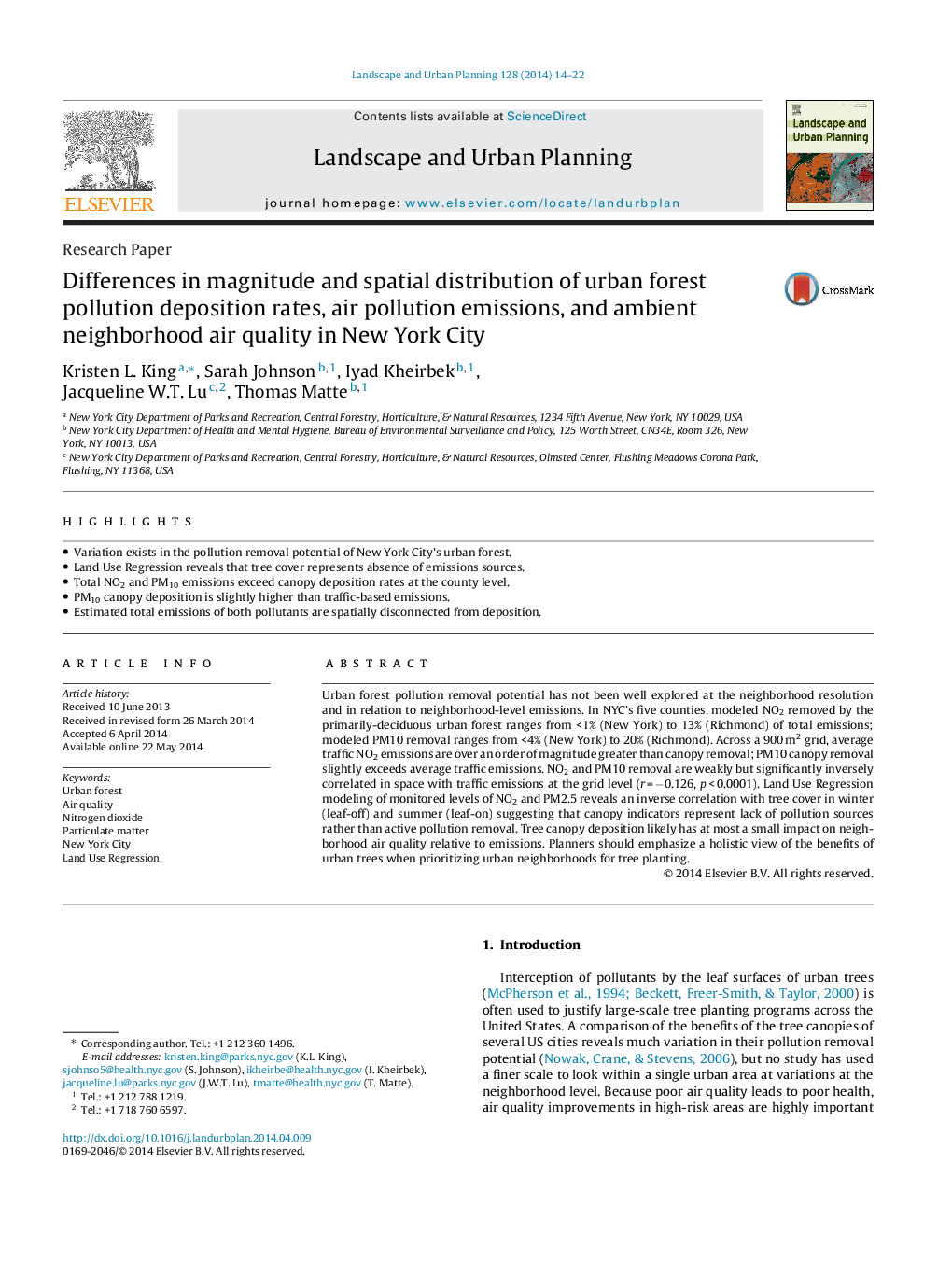| Article ID | Journal | Published Year | Pages | File Type |
|---|---|---|---|---|
| 1049215 | Landscape and Urban Planning | 2014 | 9 Pages |
•Variation exists in the pollution removal potential of New York City's urban forest.•Land Use Regression reveals that tree cover represents absence of emissions sources.•Total NO2 and PM10 emissions exceed canopy deposition rates at the county level.•PM10 canopy deposition is slightly higher than traffic-based emissions.•Estimated total emissions of both pollutants are spatially disconnected from deposition.
Urban forest pollution removal potential has not been well explored at the neighborhood resolution and in relation to neighborhood-level emissions. In NYC's five counties, modeled NO2 removed by the primarily-deciduous urban forest ranges from <1% (New York) to 13% (Richmond) of total emissions; modeled PM10 removal ranges from <4% (New York) to 20% (Richmond). Across a 900 m2 grid, average traffic NO2 emissions are over an order of magnitude greater than canopy removal; PM10 canopy removal slightly exceeds average traffic emissions. NO2 and PM10 removal are weakly but significantly inversely correlated in space with traffic emissions at the grid level (r = −0.126, p < 0.0001). Land Use Regression modeling of monitored levels of NO2 and PM2.5 reveals an inverse correlation with tree cover in winter (leaf-off) and summer (leaf-on) suggesting that canopy indicators represent lack of pollution sources rather than active pollution removal. Tree canopy deposition likely has at most a small impact on neighborhood air quality relative to emissions. Planners should emphasize a holistic view of the benefits of urban trees when prioritizing urban neighborhoods for tree planting.
